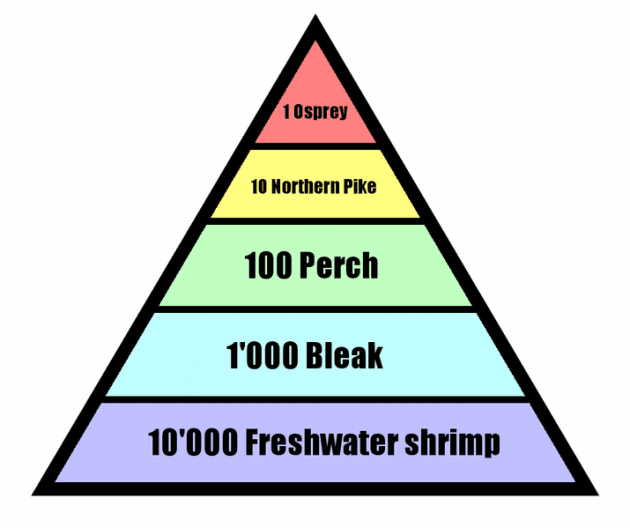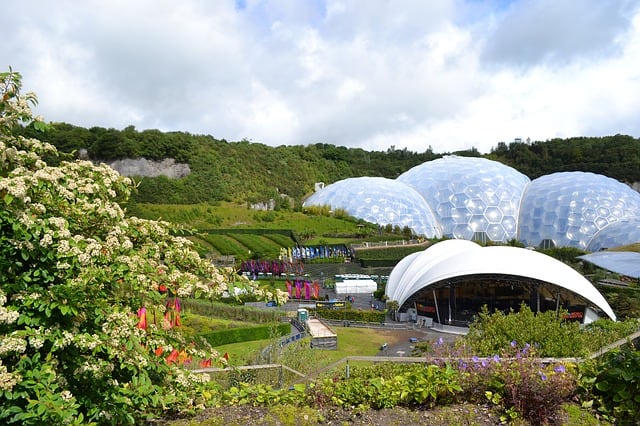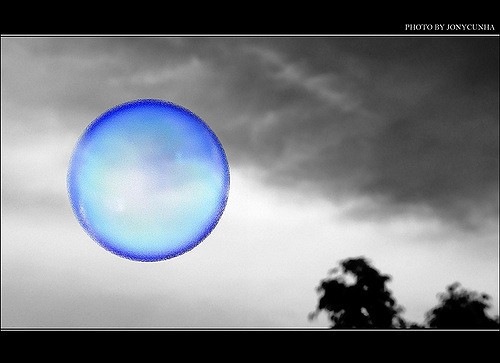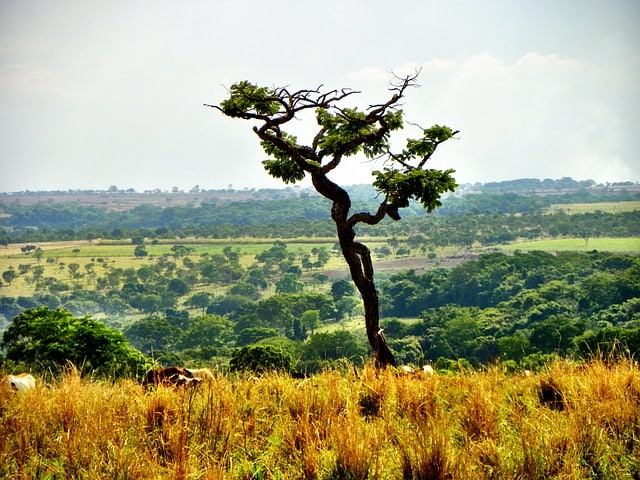Levels, Importance and Main Components of Food Chain

A Food chain can be defined as the feeding relationship between the different organisms that make up our ecosystem.
An ecosystem is a commune of living organisms. The ecosystem also includes the non-living components like, earth, water, fire, air and ether. The living and non-living together form the environment.
Within the environment, the living or the biotic components need food for survival. From the unicellular to the multicellular, from one-celled algae to giant blue whales, food is the universal need. Food in the form of energy is one common need and the most important requirement.
The method of procuring food follows a systematic series of interdependence where one particular run is dependent on another. The system thus formed, through successive runs constitute a food chain. In other words, the flow of energy from one species to another at various biotic levels forms a food chain.
Our environment is made up of multitude of organisms with their different levels of energy requirement. The food chain is a system used to transmit energy from one level to the next. A food chain basically displays the food procuring method and the energy requirement that are passed from creature to creature, a series of organisms each dependent on the next as a source of food.
The food chain depicts who is the predator and who is the prey in the wild. A link in a food chain is always food for the next creature in the chain. Grass produces its own food from sunlight. A herbivorous eats the grass, and is in turn consumed by a carnivorous. When this carnivorous dies it decays; broken down by bacteria, it returns to the soil.
A food chain always begins with a plant and end with an animal. This is because plants are producers; they produce their own food through the process of photosynthesis. Animals feed on plants and are consumers, because they cannot make their own food.
Levels of the Food Chain
The food chain starts from the base, which consists of producer organism and moves up the series in a straight line. The successive levels in a food chain are known as trophic levels. The trophic level of any living organism is determined by the position it occupies within a food chain. There are various trophic levels in a food chain.
Primary Producers
In the food chain, the primary or base level is formed by the autotrophs. These are organisms that are capable of producing their own food from such substance as carbon dioxide and turning it into energy with the help of sunlight. These are plants and algae. They do not consume other organisms, but draw nutrients from the soil or the ocean and by the process of photosynthesis manufacture their own food. They are called primary producers.
The energy for the base of the food chain comes from the sunlight.
Primary Consumers
Heterotrophic organisms or those who feed on the first trophic level, the autotroph biomass, form the second trophic level. They are the herbivores and include the tiny crustacean zooplankton that feed on the microscopic algal cells from the surface waters of lakes, ponds, and oceans, as well as much larger, mammalian herbivores, such as mice, deer, cows, and elephants. Herbivores utilize the fixed energy and nutrients in their food of autotrophic biomass to drive their own metabolic processes and to achieve their own growth.
Secondary Consumers
The next link in the chain is animals that eat herbivores – these are called secondary consumers — an example is a snake that eat rabbits. So, snakes are secondary consumers.
Tertiary Consumers
Tertiary consumers are the next level of consumers. Carnivores that consume other carnivores are called tertiary consumers like Killer whales. Killer whales hunt seals and sea lions. These are carnivores that kill fish, squid, and octopuses.
Quaternary Consumers
The next level in the food chain is occupied by the quaternary consumers. They are typically carnivorous animals that eat tertiary consumers. Also known as apex predator or alpha predator or apical predator, they are predator residing at the top of a food chain upon which no other creatures prey.
Decomposers
Decomposers break down dead plants and animals. They also break down the waste of other organisms. They are an important element in the food chain because they keep up a continuous flow of nutrients for the primary producers. Without the decomposers the plants would be unable to source their energy on the one hand and on the other, the environment would be filled with dead matter and waste.
Importance of the Food Chain
The food chains are the living components of the biosphere. These are the vehicles of transfer of energy from one level to another. Through the food chains, transfer of materials and nutrients also takes place.
So a food chain is a picture of organisms in an ecological community that are linked to each other through the transfer of energy and nutrients, beginning with an autotrophic organism such as a plant and continuing with each organism being consumed by one higher in the chain. A food chain also shows how the organisms are related with each other by the food they eat.
We all depend upon food to survive. Energy is necessary for the biotic world to grow and sustain. A food chain describes the method in which a particular organism collects its food. It is an arrangement of who eats whom in a biological community or an ecosystem to obtain food. A food chain is a way of depicting the flow of energy from one organism to the next and to the next and so on. Everyone needs the energy transmitted through a food chain in order to survive.
Components of a Food Chain
The components of a food chain can be represented as
Plants – ‘base’ of the food chain
Herbivores – feed on plants; many are adapted to live on a diet high in cellulose
Omnivores – feed on both plants and animals
Carnivores – feed on herbivores, omnivores, & other carnivores
1st level carnivore – feeds on herbivores
2nd level carnivore – feeds on 1st level carnivores
Decomposers
This forms the ‘final’ consumer group and the most important one.
They use energy available in dead plants and animals breaking them down into useful nutrients.
The phrase ‘food chain’ is a way of indicating how energy moves through an ecosystem from the primary producer the green plants to the final consumer the decomposers.
Types of Food Chains
Food chain can be classified into
Grazing food chain
This is the food chain which begins with the plants as primary producers and ends with tertiary consumers.
Detrital food chain
The components of detritus food chain, the detritivores include organisms like algae, bacteria, fungi, insects, and centipedes. Primary source of energy is dead organic matter called ‘detritus’ which are fallen leaves, plant parts or dead animal bodies.
The secondary consumers of this food chain include insect larvae, nematodes, etc.
Detritus food chains are indispensable as the dead organic matter of grazing food chain is acted upon by the detritivores to recycle the inorganic elements into the ecosystem.






